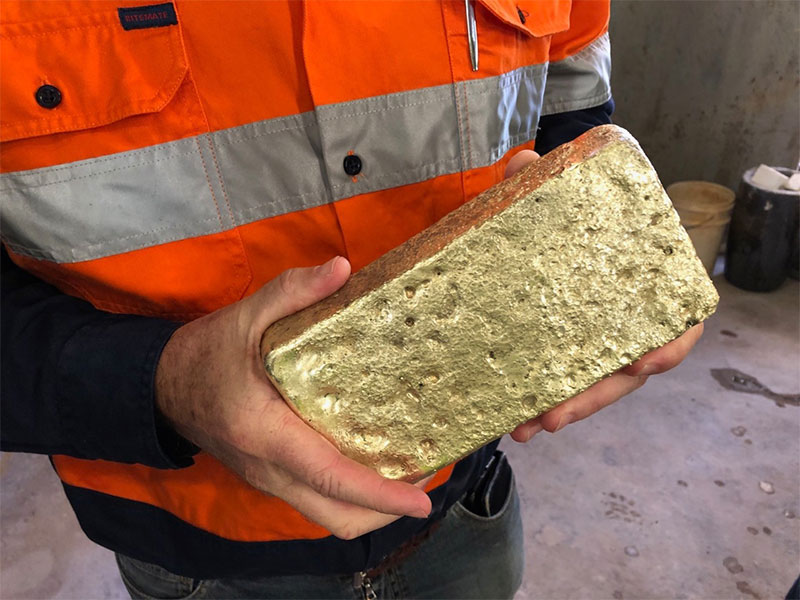Dealmaking supremo has grand plans for taking Laneway to the main street

Pic: Bloomberg Creative / Bloomberg Creative Photos via Getty Images
Special Report: Brisbane-based accountant turned company founder and investor Stephen Bizzell has established a phenomenal record for creating and crystallising shareholder value over the past few decades.
His best-known success might be Arrow Energy, the coal seam gas company for which he provided seed capital at 2c a share in 1997 that was ultimately taken out by Royal Dutch Shell and PetroChina for $4.70 a share in a $3.5 billion deal in 2010. He was an Executive Director at Arrow up until its takeover and was instrumental in its growth into a large integrated energy company.
But there has been a string of other companies, predominantly in the resources sector, that his boutique corporate advisory firm, Bizzell Capital Partners, has either founded or made early stage investments in and helped turn into successful – and sought-after – businesses.
Among those are Pure Energy Resources ($1 billion takeover by BG Group in 2009), Apollo Gas ($145 million takeover by Dart Energy in 2010), Northern Energy Corporation ($193 million takeover by New Hope Corporation in 2010), Bow Energy ($535 million takeover by Arrow in 2011), Dart Energy ($211 million takeover by iGas in 2014), Orbis Gold ($178 million takeover by SEMAFO in 2015), Stanmore Coal ($256 million takeover this year by Singapore-based Golden Investments) and Whitehaven Coal (current market capitalisation $1.56 billion).
These days Bizzell holds non-executive directorships with Armour Energy (ASX: AJQ), Strike Energy (ASX: STX), Renascor Resources (ASX: RNU) and private project management consultancy Enthalpy Pty Ltd.
His only executive role with a listed company is as chairman of Laneway Resources (ASX: LNY), which has an intriguing suite of assets including the Agate Creek gold project in Queensland, the Ashford coking coal project in NSW and a gold project near the township of Waihi on New Zealand’s north island.
Bizzell describes his time with Laneway as “a long and windy tale”, starting all the way back in 1996 when the company was known as Kakadu Resources and he became involved in its recapitalisation after it had gone into administration. Upon emerging from administration, it was renamed Sirocco Resources before taking on the Renison Consolidated Mines moniker in 2002 and then finally becoming Laneway in 2013.
By Bizzell’s own admission, the company has been “reasonably capital constrained” in recent years but looks to have overcome that issue and is shaping to make a serious go of Agate Creek, its flagship asset.
He had hoped to move on unlocking the potential of Agate Creek much earlier, having planned to use proceeds from the sale of the Tom’s Gully gold mine in the Northern Territory in 2007 for that exact purpose.
But events, including a once-in-200-year rain event that flooded Tom’s Gully and the Global Financial Crisis, conspired to scupper those plans and left Bizzell and his team with a significant rebuilding task that has only relatively recently been completed.
Self-funding strategy in action
Rather than raise money on the market, his answer to easing the capital constraints on the company has been to have the projects generate the funding required to move forward themselves.
From April to September last year, an initial campaign of mining near-surface, high-grade material took place at Agate Creek with ore treated through Maroon Gold’s Black Jack processing facility.
Laneway’s share of production – 5,242 ounces – delivered approximately $10.6 million in revenue.
The company is gearing up for a second mining campaign at the Sherwood deposit at Agate Creek in August, again treating ore through a third-party mill, and expects to generate “material positive cashflow” potentially exceeding the amount from the first campaign.
While Sherwood has a small, high-grade resource, the broader Agate Creek projects contains a resource of 470,000 ounces that Laneway wants to grow to more than 1 million ounces, at which point it can start to look at studies for a standalone mining operation.
The cashflow from the upcoming mining campaign will help fund the exploration necessary to achieve that goal, as well as progress what Bizzell describes as “two other very good assets” in Ashford and the New Zealand Gold Project.
The New Zealand project is close to OceanaGold’s Waihi gold mine, which shapes as a sensible low capital option for treating any reserves that can be proven up.
Laneway had hoped to be drilling in New Zealand this year, focusing on the historically mined area of Jubilee, but the planned program has had to be delayed due to COVID-19 quarantines and restricted access arrangements in the country.
At Ashford, the company is looking to establish an open cut operation producing between 500,000 and 1 million tonnes of hard coking coal a year. The project currently has an indicated and inferred resource of 14.8 million tonnes.
Well versed in coal from his involvement with Whitehaven, Northern Energy and Stanmore Coal, Bizzell says he is still very bullish about the coking end of the market and expects that product from Ashford would find a ready market with global steel makers based on coal quality testing completed to date.
He acknowledges that gold and coal are not necessarily the best bedfellows and says Laneway continues to review options for separating Ashford out into a different vehicle.
This sort of pragmatic, matter-of-fact approach to running listed companies appears to be one of the keys to success for Bizzell.

Shareholder interest wins out
He understands that while increasing the fundamental value of a project through exploration appraisal and other means is important, so too is keeping an eye on the corporate side: whether there is a quicker route to the finish line or someone else that is a more logical owner.
“You always need to be looking at both paths for shareholder value creation,” Bizzell says. “Some executives can tend to put the blinkers on and don’t contemplate the takeover route for reasons including wanting to protect their own job.
“What I think we’ve shown over the years is that we’re happy to lose our jobs if it’s at the right price and shareholders are going to win out as a result.”
While he could clearly opt to slow down if he chose to, Bizzell doesn’t give any indication that he will. Only in his early 50s, he feels he has plenty more to give in a business sense.
“I started out a bit younger than most; before I was 30, I had been on a couple of listed company boards.
“I still enjoy what I’m doing, creating value through developing a mine or a gas field, whatever it may be, turning something in the ground into something of real value. I get a real kick out of that.”
This will be music to the ears of Laneway shareholders, who will be hoping that their company is soon added to the long list of Bizzell success stories.
This story was developed in collaboration with Laneway Resources, a Stockhead advertiser at the time of publishing.
This story does not constitute financial product advice. You should consider obtaining independent advice before making any financial decisions.
Related Topics

UNLOCK INSIGHTS
Discover the untold stories of emerging ASX stocks.
Daily news and expert analysis, it's free to subscribe.
By proceeding, you confirm you understand that we handle personal information in accordance with our Privacy Policy.








